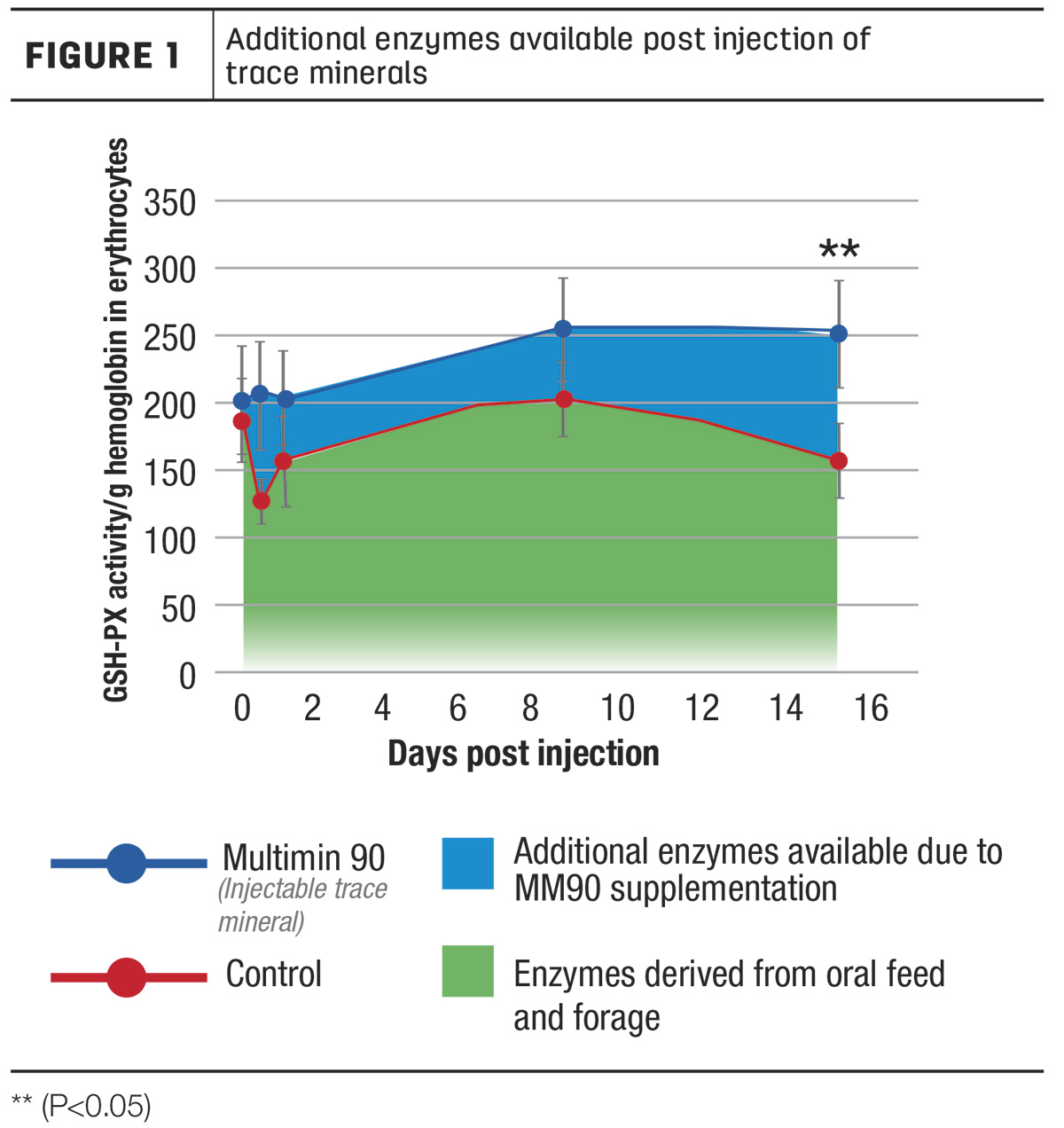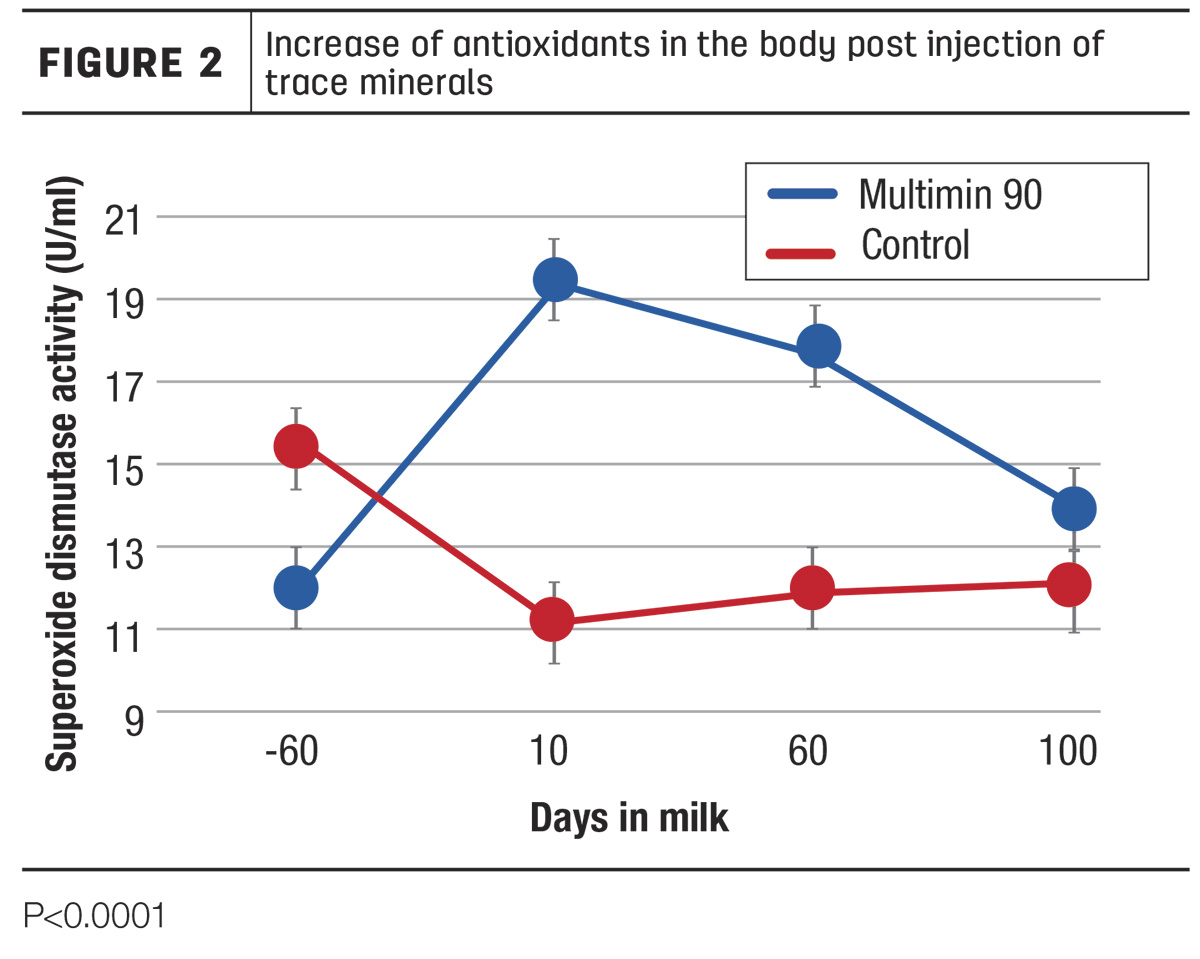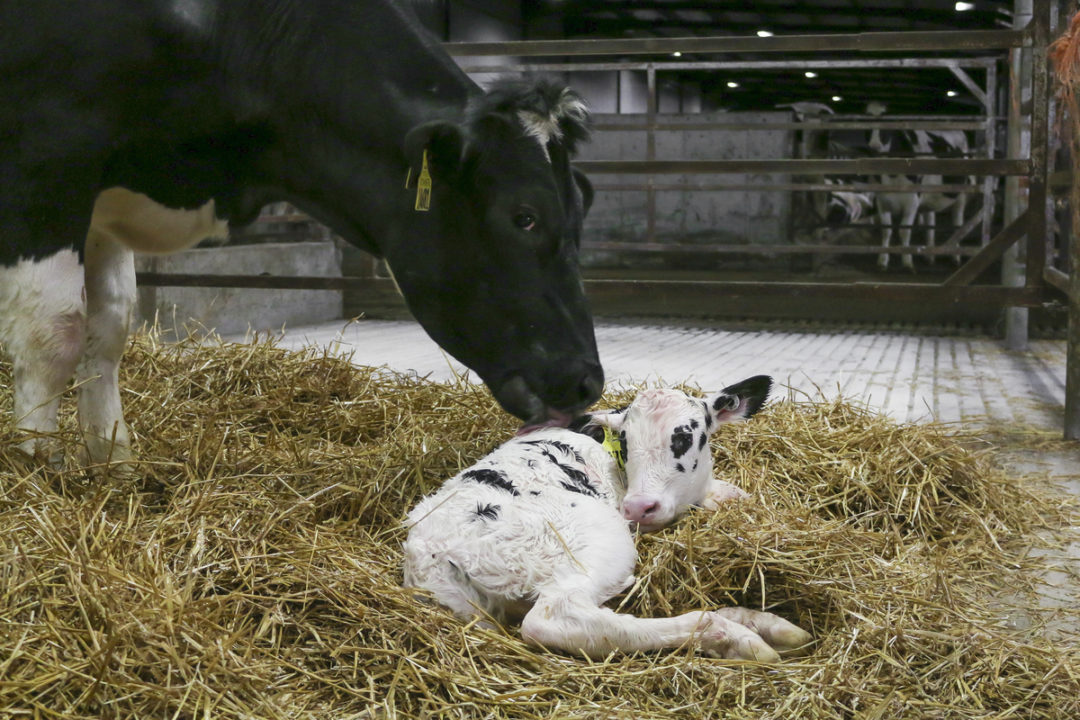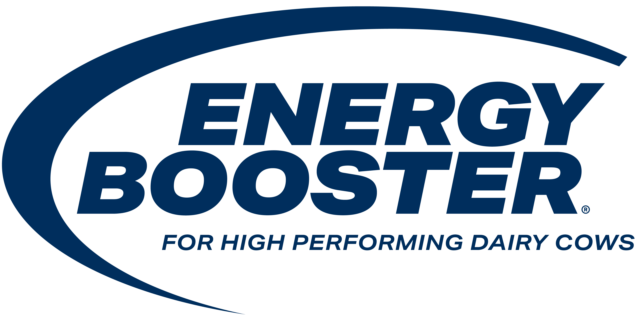Unlike deficiencies that occur with macrominerals, such as calcium that leads to a well-defined clinical condition of milk fever, trace mineral deficiencies are generally a contributing factor to many conditions. Decreased levels of trace minerals in the body can contribute to retained placentas, metritis, stillborn calves, mastitis and, later on, poor reproductive performance. When herds are experiencing increased rates of these problems, trace minerals are generally glanced at quickly to check a box, but not always examined to make sure the trace mineral levels are at the appropriate level to ensure optimal performance of the cow. Understanding how the body utilizes trace minerals to avoid these problems is essential in ensuring cows have the minerals they need but, more importantly, have the minerals when they need them.
One of the critical events the body requires trace minerals for is in overcoming oxidative stress. We are all familiar with the effects of oxidative stress without realizing it. When an apple is cut or has a bite taken out of it, exposing the white flesh under the skin, and then is left in the presence of air, the apple begins to turn brown. This is oxidative stress, and there is nothing we can do to reverse the effects of this oxidative stress on the apple. If we put the apple in a plastic bag or container, we can stop the oxidative stress from progressing, but we can’t reverse what has already been done.
The body is constantly being exposed to oxidative stress. Mammals require oxygen as part of cellular metabolism. As this oxygen is used in metabolism, it becomes converted to oxide radicals, which are toxic to the body and must be neutralized before they are able to damage the cells. Oxidative stress is especially damaging to DNA, proteins and lipid membranes, which are all essential components of any cell. Any activity that increases the need for oxygen, such as exercise, pregnancy, injury or stress, also increases the amount of potential for oxidative stress.
The body has a number of defense mechanisms set up, known as antioxidants, which neutralize these oxide radicals. Glutathione peroxidase, superoxide dismutase and catalase are three essential antioxidants within the body, all of which are dependent on the presence of trace minerals to function. When the production of oxide radicals exceeds the capacity of the antioxidants, oxidative stress occurs, irreversibly damaging cells. Trace mineral status is critical in ensuring adequate quantities of these antioxidants.
Transition cows are especially susceptible to oxidative stress, due to the physiologic and metabolic changes that are occurring at the end of pregnancy and initiation of lactation. A growing fetus with increased nutrient requirements (including oxygen), inflammation due to parturition and exposure to uterine pathogens all increase the risk to the cow. At this time, the cow will have an approximate 30% reduction in trace minerals status due to placental transfer to the calf and parturition. In the final week before calving, a cow’s dry matter intake (DMI) decreases by nearly 90%, limiting the amount of trace minerals in her system to fuel the necessary antioxidants to prevent oxidative stress during the critical first three weeks of lactation. Studies have shown that the faster cows can reduce inflammation following calving, the more likely they are to have a successful lactation. In addition to needing these trace minerals for overcoming oxidative stress, the transition cow must also have adequate trace minerals to fuel the immune system to prevent diseases such as metritis or mastitis.
Maintaining cows on an oral mineral pack throughout all stages of lactation, including the dry period, helps in allowing cows to build up trace mineral reserves in the liver that can be mobilized during periods of higher demand, such as the transition period. Not all oral trace minerals are created equally, though. While the requirements for trace minerals are based on the individual element, the minerals are fed in the form of a salt. Each trace mineral is coupled with another substance to be fed to the cow. Inorganic minerals have the essential minerals coupled to other elements, forming salts such as copper oxide or zinc sulfate. Organic minerals bind the trace mineral to a carbon-containing compound such as a protein, yeast or polysaccharide.
The bonds that the minerals form, whether organic or inorganic, greatly influence the bioavailability to the animal. A mineral pack containing copper as copper sulfate has an absorption coefficient of 5%, while a copper amino acid complex with a bioavailability of 130% of copper sulfate would increase the absorption coefficient to 6.5%. This means that if the mineral pack is designed to supply 15 parts per million (ppm) of copper to the animal in the form of copper sulfate, the cow would absorb 0.75 ppm (or about 18.75 milligrams of total copper if the cow is consuming 25 kilograms of dry matter). If this same amount of copper were supplied as copper methionine complex, the amount absorbed would be 0.975 ppm (24.375 milligrams of total copper with 25 kilograms of DM). When these reserves are diminished, replenishing them may take anywhere from four to six weeks, depending on the quantity and form of the trace minerals used. This means a cow that depletes her trace mineral stores at calving may be trying to recover those minerals at the very time she needs them most.
Simply increasing the quantity of trace minerals in the ration does not always work, either. For some trace minerals such as zinc, the body will downregulate the number of transporters in the small intestines when excess zinc is present, thereby limiting the amount of zinc that can be absorbed.
Recognizing and understanding the fluctuation of trace mineral status and their need at critical points, such as at calving, allows producers to target these cows and supplement them in a way that avoids antagonism and low absorption.
Injectable trace minerals are not designed to and cannot replace oral mineral packs, but are able to boost the mineral status of cows quickly at critical times. The formulation of these injectable trace minerals allows the minerals to bypass the digestive tract and be absorbed directly into the bloodstream without facing rumen antagonism or limited intestinal absorption. A single subcutaneous injection can significantly increase serum trace mineral status within eight to 10 hours, with liver levels being increased within 24 hours post-injection. More importantly, these injections of trace minerals are able to increase the number of critical antioxidants in the body, reducing the risk of oxidative stress through the transition period (Figures 1 and 2).


As producers look for new ways to improve the performance of their transition cows, injectable trace minerals provide a simple and effective way to ensure the cow receives the minerals her body requires at the time she needs them most.








